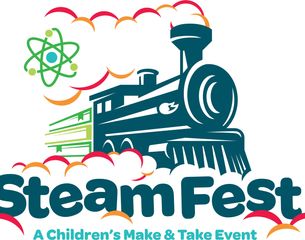
Home Science Tools: Pumpkin Petri Dish Activity
September 11, 2019
SteamFest 2019
Sunday, September 29, 2019
6:00 PM— 9:00 PMUTC
New to participating in SteamFest, Home Science Tools will be facilitating two activities at the Billings Depot-located 2019 SteamFest on September 29. They tease that both activities will offer kids the chance to “roll up their sleeves and explore with fun, interesting, and very unexpected materials.” This hands-on activity will allow the kids to take their goodies with them! Additionally, they’ve shared with us an activity that families can do together at home ahead of (and beyond) the event.
Home Science Tools Pumpkin Petri Dish
Supplies:
- 1 pumpkin (or part of it)
- Ziplock bags
- Marker (to write on bags)
- Data sheet/paper
- Pencil/pen
Directions:
- Cut a pumpkin into pieces that will fit inside the Ziplock bags, placing one piece of pumpkin in a bag. The size of these pieces of pumpkin is not important; just make sure they fit in the bags and the pieces are fairly uniform in size.
- Close the Ziplock bags most of the way (the environment needs to be moist, yet fresh air needs to enter.)
- Place the bags in various areas around the house such as the refrigerator, a sunny area, a shady area, a warm area, a dry area, a moist area, etc. (You may want to label each bag with its location)
- After choosing the locations for your pumpkin petri dishes, predict which pumpkin will grow the most mold during the course of the experiment.
- Each day, look at all your pumpkin samples and record how much mold has grown on each piece.
- Print out and use the Pumpkin Petri Dish Chart to record your pumpkin petri dish data.
Questions:
- When did the mold start to grow on pumpkin section 1?
- Pumpkin section 2? etc…
- How would you compare the growth of mold on pumpkin section 1 to that of pumpkin section 2?
- How is temperature/time related to the growth of the mold?
- What could be done to minimize the growth of mold?
- What could be done to maximize the growth of mold?
- How would you apply what you learned to where we should keep our food?
- How would you adapt this experiment to create a different experiment?
© Home Science Tools
You Might Also Try:
Experimenting with activities like these are great ways to bring STEAM into the home, Home Science Tools, a business founded on the belief that the fundamental role of education is to provide kids and young adults with practical skills and values needed for successful futures, adds these thoughts on the benefits and how to put intention into action. They share:
Science is an ever-evolving, crucial life skill; being able to transform future generations’ relationships with science from that which feels like an academic requirement to one that is embraced as a natural, essential part of life is vital. It’s as simple as having parents roll up their sleeves and supporting their children in all aspects of life – learning the how and why of something is the foundation of curiosity. Exploring together is discovery. It doesn’t have to be hard. In fact, we work to make it easy, fun and experiential. We have been those parents, working to facilitate STEAM in our home. It’s the foundation of our company and why we went into business 25 years ago this year; to help other parents be able to access the supplies needed to help their children grow and develop, through inspired learning. We provide endless relevant, experiential, fun, easy-to-use products, supplies, and content to help parents make it easy.






